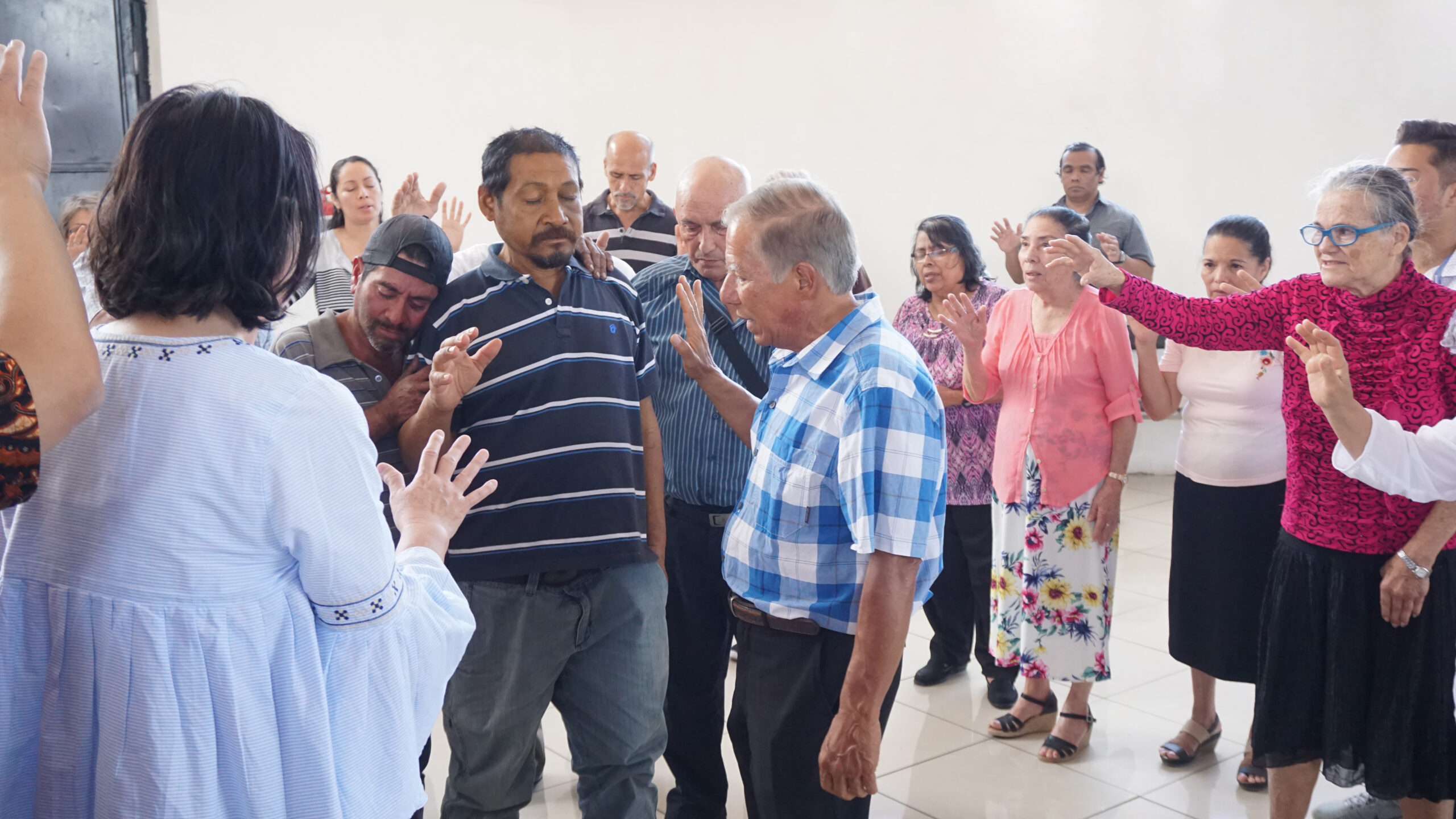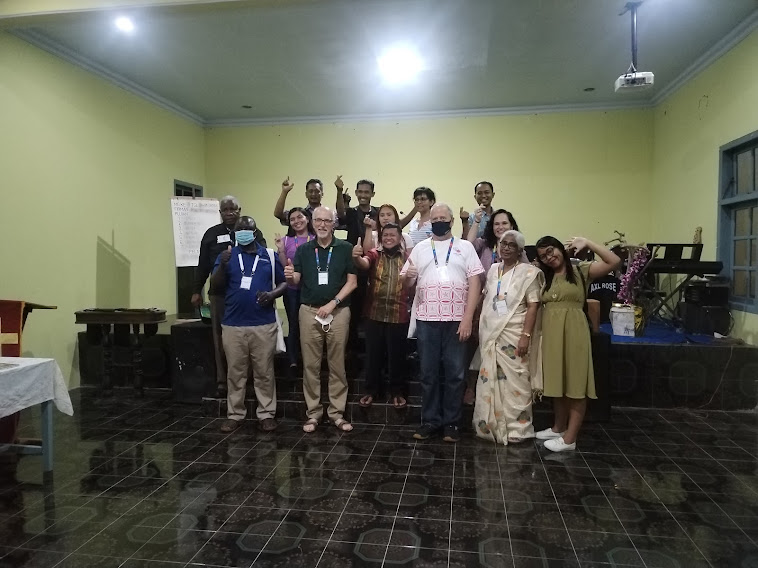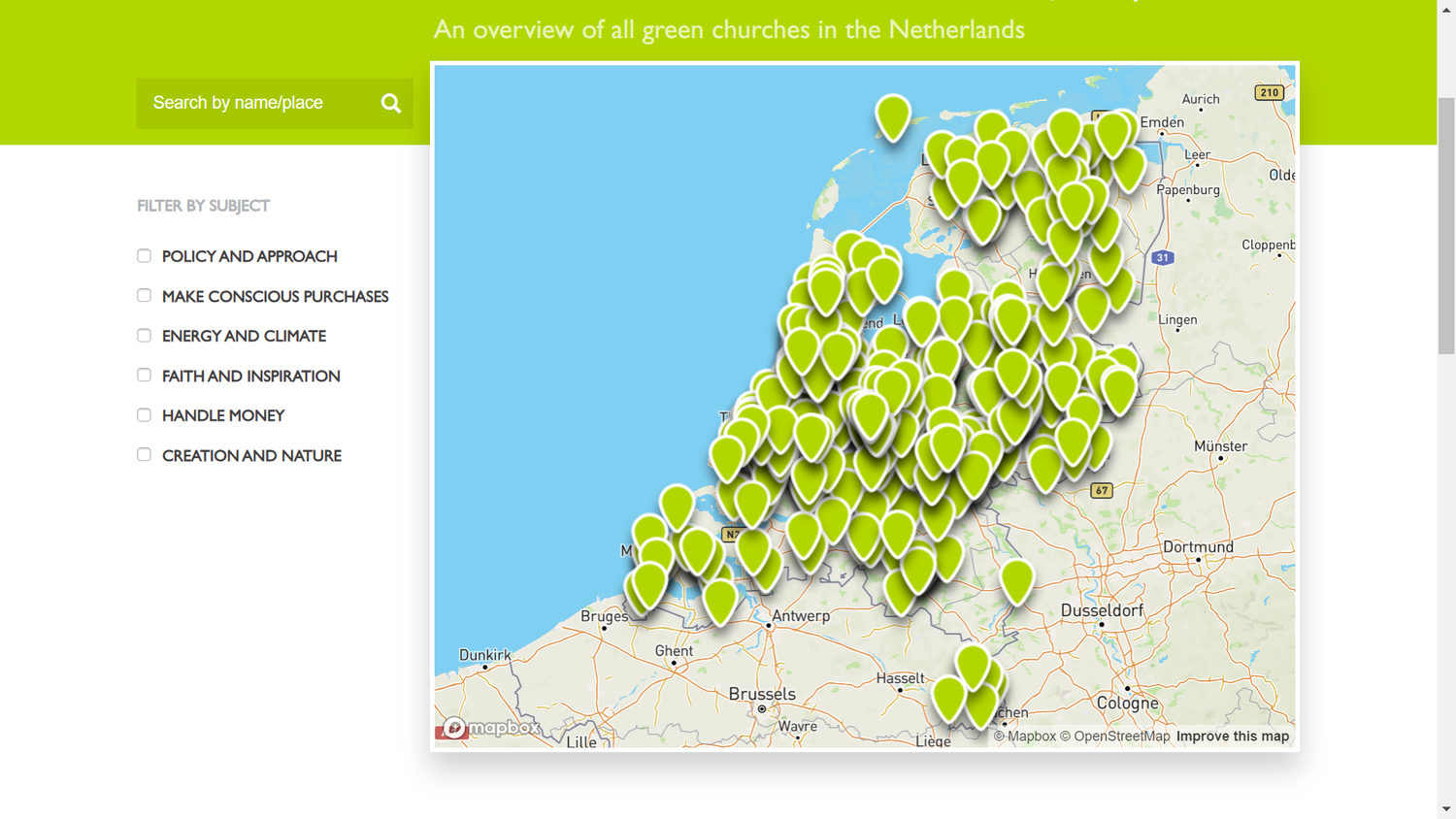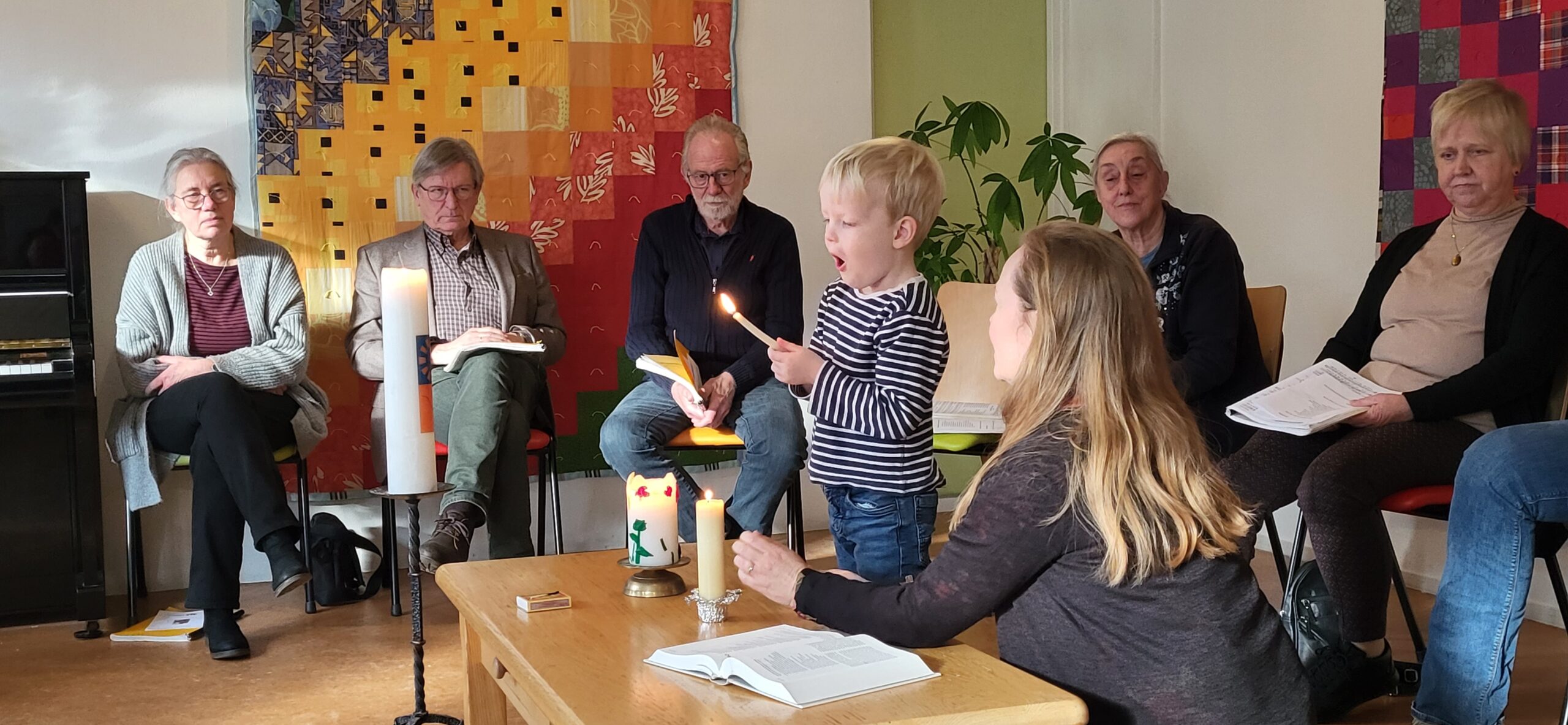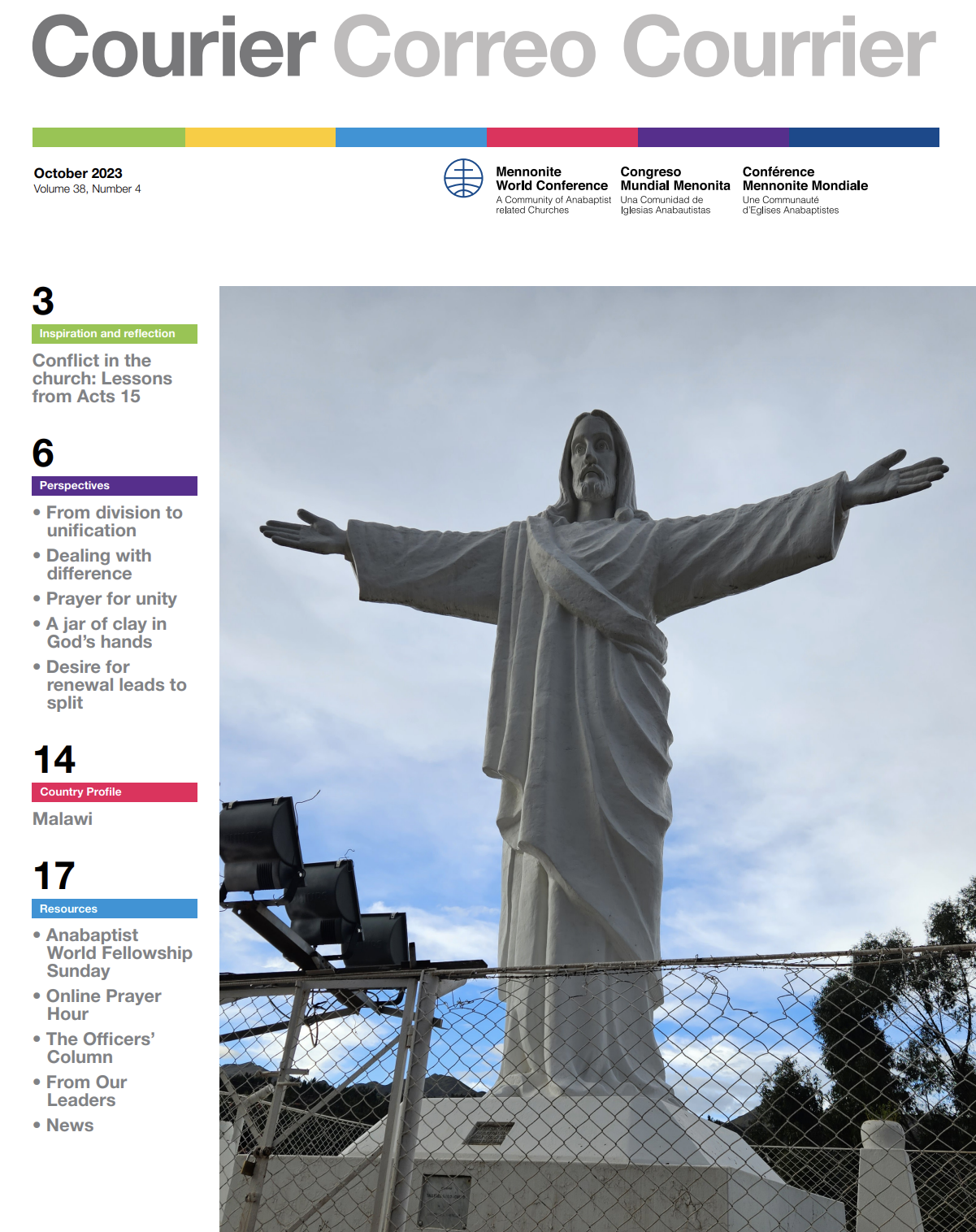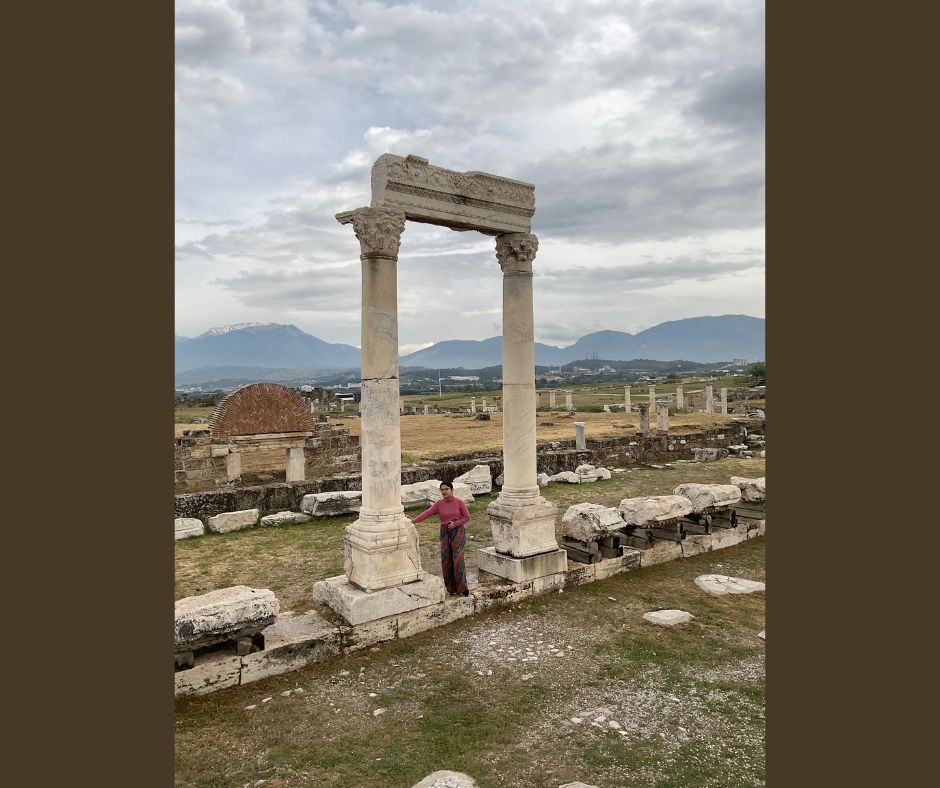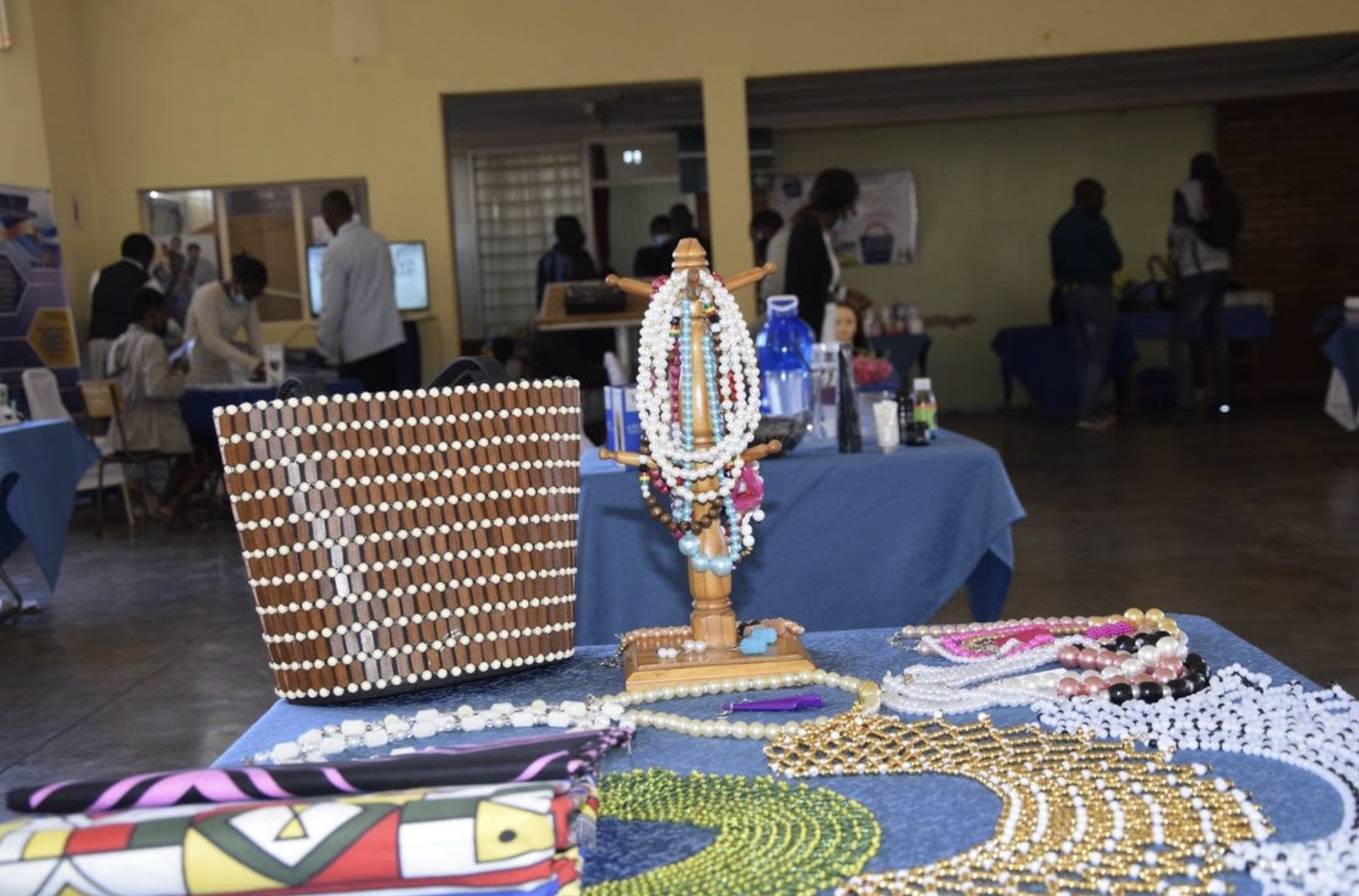-
MWC calls for global energy transition
Earth in all its diversity, vitality and abundance is a gift that has been overshadowed by neglect, exploitation and unsustainable consumption. Anabaptist values, by contrast, call for stewardship (thoughtful care-taking), simplicity and the dignity of all persons created in the image of God. On behalf of Mennonite World Conference, the Creation Care Task Force (CCTF)…
-
COP 28 blogs by a Dutch Mennonite
Stories in this page: Endgame (13 December 2023) Scandalous (11 December 2023) Human rights (10 December 2023) The Netherlands in the spotlight (9 December 2023) Adaptation (6 December 2023) Time pressure (5 December 2023) Money, money, money (4 December 2023) Balancing act (3 December 2023) High level segment: kings, financiers and residents (1 December 2023)…
-
How I envy you!
Some years ago, in my local congregation in Colombia, a friend said to me: “Oh! César, how I envy you!” Why? I asked her. “I work in a multinational company. I deal with a lot of stress because of ongoing conflicts and broken relationships with my colleagues and bosses. But you, César, you work with…
-
Dealing with difference
Indonesia The churches of GITJ (Gereja Injili di Tanah Jawa – Evangelical Church in the Land of Java), Indonesia, had been in conflict for some 22 years. This was largely because one group (with 24 member churches) was recognized by the Indonesian government while the other (with about 50 member churches) was not. All during…
-
Desire for renewal leads to split
Canada The Mennonite Brethren church began in the midst of significant change among Mennonites in what was then South Russia. It was in 1860 that some members in the Gnadenfeld Mennonite congregation in the Molotschna settlement petitioned their leaders to meet separately for communion. These members did not want to celebrate communion with those who…
-
One new step each year
You are invited! Join us for Climate Pollinators, a webinar series on creation care. See below! On a map of Green Churches in the Netherlands, there is a green dot for the Mennonite congregation in Aalsmeer. Another dot represents Arboretumkerk (previously Doopsgezinde Gemeente Wageningen), located a province over. “Six years ago, the church (in Aalsmeer)…
-
Prayer for unity
Switzerland In recent years, the Mennonite theological school Bienenberg Training Centre in Switzerland has offered a “Hot Topics” course, which gives voice to opposing perspectives on current hot topics in the churches. As they hear points they agree or disagree with, the attendees are invited to engage with their own sensibilities and convictions: to listen…
-
Courier 2023 / 38.4
Inspiration and reflection Perspectives Country Profile Resources General Secretary Word from the editor Making space and time for conflict We don’t like to talk about it. The unity of Christ seems to be easier to maintain separately. Our tradition as Mennonite peacemakers results from a split from the wider church, and our plurality today –…
-
“We need one another”
Meet Vikal Rao, Rajnandgaon, India. Member of the Deacons Commission. How do you serve MWC? I am serving officially as a member of the Deacons Commission (2018-2025). My journey with MWC started in 1997: I was a youth steward in the Global Church Village (GCV) during the Assembly in India. Then, I was the first GYS representative…
-
Conflict in the church: Lessons from Acts 15
I grew up in a Mennonite congregation in Argentina. I remember the preaching and teaching on forgiveness and reconciliation both within the church family and also in relating with those outside the faith community. I also remember situations involving tension and even the threat of division. Some of the concerns: diverging views on women’s use…
-
Eco-theology reconciles the church with nature
You are invited! Join us for Climate Pollinators, a webinar series on creation care. See below! When human beings were created in Genesis, “This was the first mission of the human… to both enjoy but also to protect and take care of creation,” says Danang Kristiawan. Danang Kristiawan is the pastor of the GITJ (Gereja…
-
Building resilience in church members
Like many in Zimbabwe, Sukoluhle Ncube splits her time between the city where her family lives and works, and the rural community where they farm, 40 minutes away. “Most of the people have two homes,” Sukoluhle Ncube says. “In the town, you come and work and all that, but in the village that’s where we…


